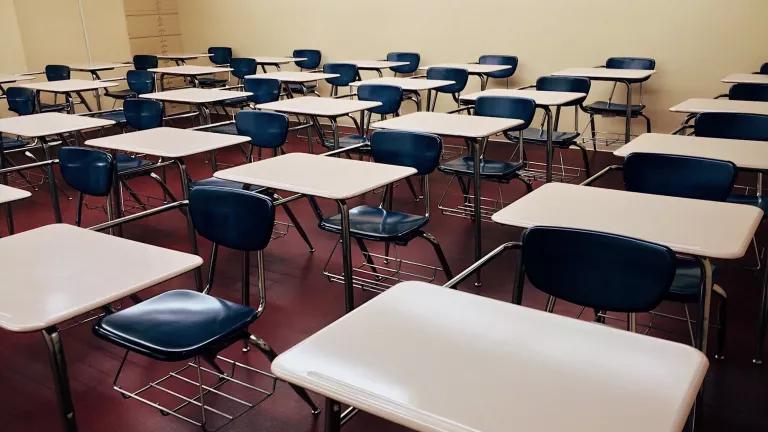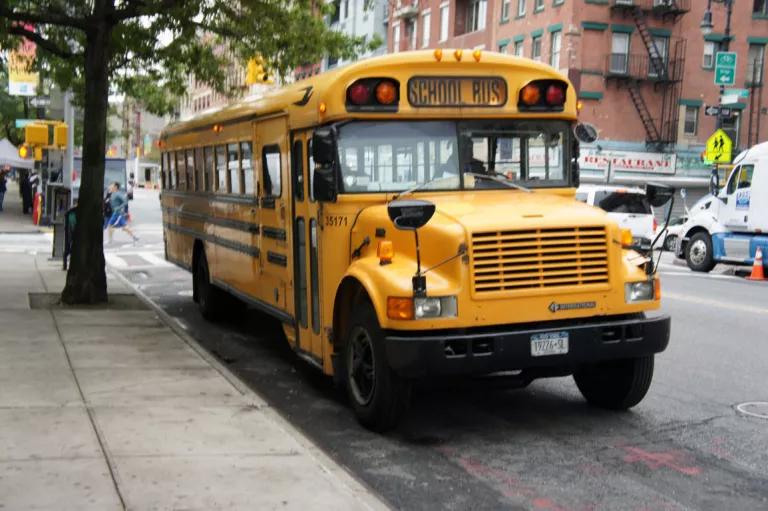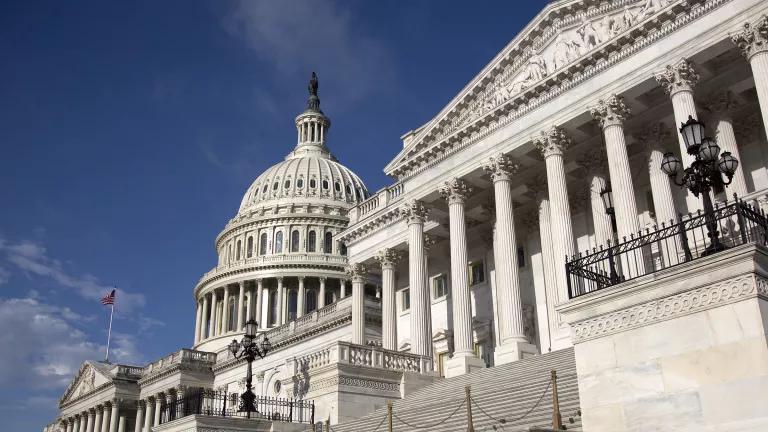School’s Back: How COVID-19 and Heat Jeopardize Learning

As school districts and colleges nationwide consider in-person instruction this fall, COVID-19 isn’t the only health concern facing students and staff. Poorly maintained heating, ventilation, and air conditioning (HVAC) systems can exacerbate unseasonably warm temperatures, limit airflow and circulation, and compound the possibility of heat-related illness as well as COVID-19 transmission amongst students and staff. While a number of school systems and universities have opted into or are offering partially or fully remote online learning this fall semester, many districts and parents/guardians alike are eager to have kids back in the classroom and back to some sense of normalcy, but students and staff deserve better protections.
Worry about person-to-person transmission of COVID-19 is, of course, top-of-mind for everyone involved, and aging HVAC systems may make it more likely. A recent Government Accountability Office (GAO) report estimates that 36,000 public schools nationwide have inadequately maintained ventilation systems, meaning many students and staff are already facing too-hot, poorly circulated indoor environments. Since COVID-19 is an airborne virus, inadequate ventilation or air filtration can increase the risk of transmission.
In addition, many classrooms across the country don’t have air conditioning, including some in major urban areas facing increasing summertime temperatures because of climate change. In New York City, one of the largest public-school systems in the country, one in four classrooms was without air conditioning in 2017. High outdoor temperatures can keep indoor environments above comfortable levels, affecting mood, making it difficult to concentrate, and even worsening student cognition and test scores.
Even worse, many students and staff are vulnerable to heat-related illnesses because they live with heat-sensitive health conditions like heart disease or obesity or take medications that can make body temperature regulation difficult. On top of this burden, many teachers have reported limiting their water intake due to limited restroom breaks. Lack of sufficient hydration paired with high indoor temperatures can put staff at risk of heat-related illnesses, too. These health threats may be amplified by wearing masks, which while critical for controlling transmission and reducing the spread of COVID-19, can make wearers feel uncomfortable in the heat. Feeling too hot in a mask could result in improper or inconsistent mask wearing among staff and students, potentially reducing their effectiveness.
It’s not just students and teachers who are threatened by heat at school. Many school buses lack air conditioning or fully operable windows, and one school bus driver in Louisiana said the heat index inside his bus can reach 105 degrees Fahrenheit. These conditions are particularly unhealthy for bus drivers, an estimated 73 percent of whom are over the age of 55. They are a vulnerable age group for both heat-related illness and severe complications from COVID-19.

Another challenge to providing a safe in-person learning environment is the lack of trained, on-staff personnel to treat illnesses and emergencies. Protecting students and staff from COVID-19 and the impacts of heat is critical to maintaining a safe learning environment, but so is treating health complications when they arise. According to an Institute of Education Sciences study, only 52 percent of U.S. public schools employ a nurse full-time. Without properly trained medical staff on-site, heat illness symptoms may go unrecognized or be treated incorrectly.
For schools to safely and effectively manage the COVID-19 crisis and adapt to present and future high summer temperatures, a number of things need to happen:
- Upgrade HVAC systems. Implementing measures to improve air circulation and maintain comfortable indoor temperatures helps protect against both heat and COVID-19.
- Upgrade or retrofit school buses to include air conditioning. Heat is especially dangerous to bus drivers, who are more likely to be older and more at risk.
- Hire nurses to be on-site at schools. Having trained medical professionals available to identify and treat health complications is critical to ensuring appropriate care is given, or potential COVID-19 cases are quarantined and sent home.
- Create an occupational heat safety standard. The Occupational Safety and Health Administration (OSHA) needs to protect teachers, bus drivers, janitors, and other school personnel from the impacts of heat with a federal standard.
- Increase funding for schools. All of the above cost money, and schools in 29 states received less overall state funding per student in 2015 than in 2008. More financial resources will help give schools and systems the flexibility to tackle multiple issues at once.
Ensuring that students and staff have a safe, healthy place to learn and work in is critical to a successful school year now, and in the future.


